Note: This website was automatically translated, so some terms or nuances may not be completely accurate.
How Does Desire Emerge? The Challenge of Modeling and Contemporary Desire Theory
In this series, members of Dentsu Inc.'s new consumer research project " DENTSU DESIRE DESIGN (Dentsu Desire Design: hereafter DDD) " will introduce their approach to consumer insights starting from "desire" and future developments.
Desire is like magma lurking beneath needs
Modern "desire" is complex. It isn't formed by a single urge alone, but emerges from the interplay of multiple desires and thoughts, individual perspectives, circumstances, diverse backgrounds, social phenomena, and environments.
Recently, it has become increasingly apparent that merely grasping visible demands like "needs" or "wants" is insufficient to capture the essence of phenomena.
It could be said that we now need to uncover what lies even deeper beneath the needs.
We at DDD have resolved to confront this challenge. We began by naming the underlying "desire to do/have" feelings and the drivers compelling action as "desire," and embarked on a journey to explore where this "desire" originates. This time, we share insights discovered on that journey about how "desire" is born.
Many desires are not necessarily conscious; they are only perceived once they take the form of a "need." If a "need" is like lava erupting onto the surface, then desire can be likened to magma slumbering deep underground.
How do we uncover the desires slumbering underground?
On this journey into the depths of human consciousness, we first needed to uncover the mechanism by which "desire" is born.
The "fundamental desires" inherent in every human being become desires when combined with values.
Countless "desires" have been born by many people throughout history.
Desires do not become fixed; they constantly shift and change form, swaying with the times and environment.
On the other hand, we humans inherently possess fundamental "needs."
The psychological term "need" is a distinct concept from "desire."
These fundamental "needs" were discovered by pioneers like Maslow (※1). They represent the innate physical and psychological "demands" inherent to humanity, remaining constant and universal regardless of era or individual.
※1 = Maslow (Abraham Harold Maslow)
An American psychologist. He proposed "Maslow's Hierarchy of Needs," considered one of the key concepts in marketing.
To clearly distinguish them from fluctuating "desires," we will refer to these universal and unchanging needs as "fundamental needs."
"Fundamental needs" interact with each individual's unique traits—shaped by personality, lived experience, and cultivated values—causing some inclinations to strengthen while others weaken. Furthermore, through interactions with other inclinations, countless complex desires are believed to emerge.
These unique individual traits act as a sort of "filter" for fundamental desires. In DDD, we named this the "value foundation."
In other words, we discovered a mechanism where "desire" takes shape by multiplying the variable of an individual's "value foundation" with their fundamental desires.
Concrete needs arising from these generated desires, and the actions taken from them, are assumed to influence the individual's "value foundation" as experience. This creates a loop where "values" constantly change, and "desires" also evolve.
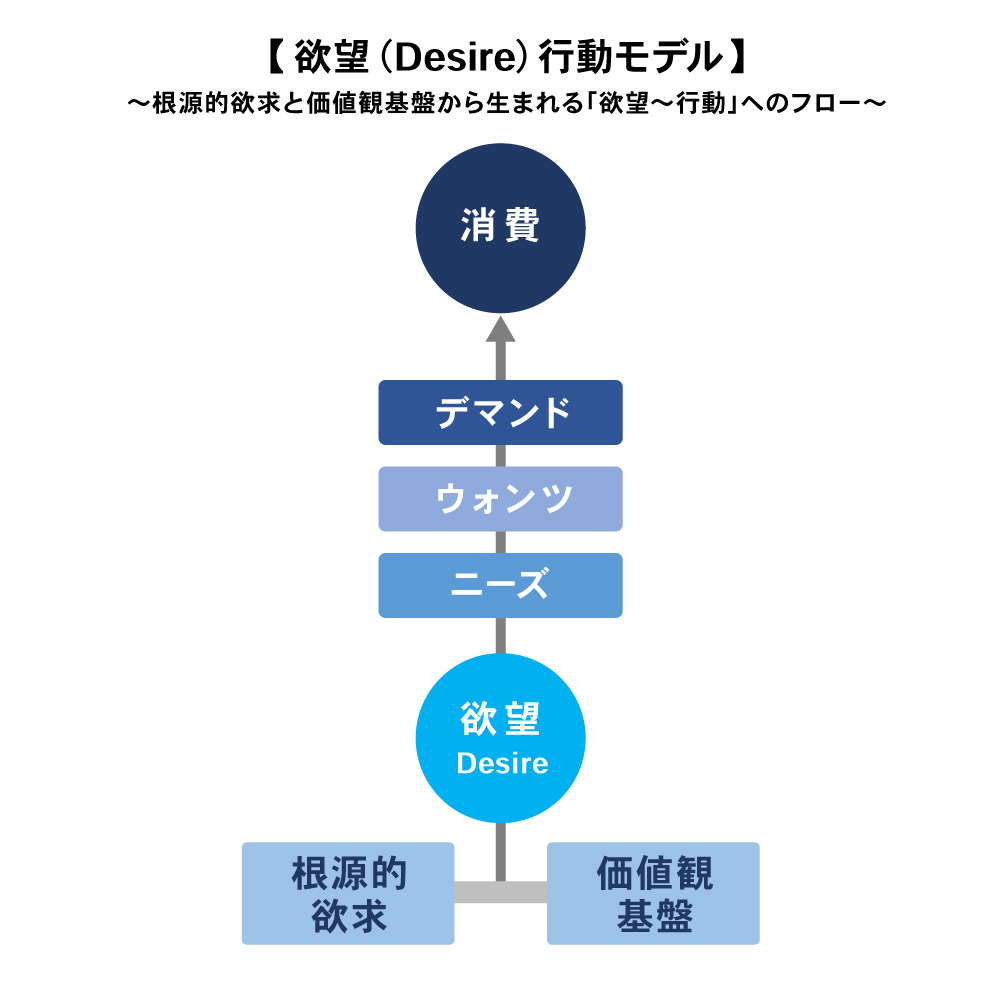
By modeling this concept, it becomes possible to quantitatively capture "desire," which previously could only be inferred from events without specific methods. As a result, we believe it will be possible to predict upcoming needs and actions with more solid grounds than before.
Created from research on conventional desire diagrams! The "Desire Octagram"—redefined by consolidating and categorizing eight "fundamental desires."
To study the mechanisms of desire more deeply, it is essential to first clarify the fundamental desires that serve as the starting point for human behavior.
Research on "desire" has been conducted since ancient times by many pioneers, including Maslow, and various theories exist.
We reviewed numerous literature and papers, making many discoveries along the way.
Among these, when we surveyed Maslow and Murray's (*2) "List of 39 Needs," Schwartz's (*3) "Value Theory-Based Classification of Needs," and Alderfer's (*4) "ERG Theory" (*5), we realized the fact that "no single model completely covers all needs."
※2 = Murray (Henry Alexander Murray)
Psychologist. He comprehensively cataloged and listed human needs.
※3 = Shalom H. Schwartz
Social psychologist, cross-cultural researcher. Developed the theory of human values. Proposed that human values can be classified into 10 categories.
※4 = Clayton Paul Alderfer
Psychologist, consultant. Developed Maslow's hierarchy of needs by classifying it into the ERG theory (Existence, Relatedness, Growth).
※5 = ERG Theory
Proposed by Alderfer. Classifies human needs into three categories: Existence, Relatedness, and Growth. ERG Theory identifies growth needs as the highest-order need.
As shown below, differences arise between Maslow's five-stage hierarchy and Schwartz's classification of needs because their classification axes differ.
The major difference lies in classification: Maslow organized needs along a "growth axis" where "as lower-level needs are satisfied, one acquires the next higher-level need," while Schwartz classified needs into four quadrants using two axes: "Individual ⇄ Society (Internal vs. External)" and "Defense ⇄ Expansion."
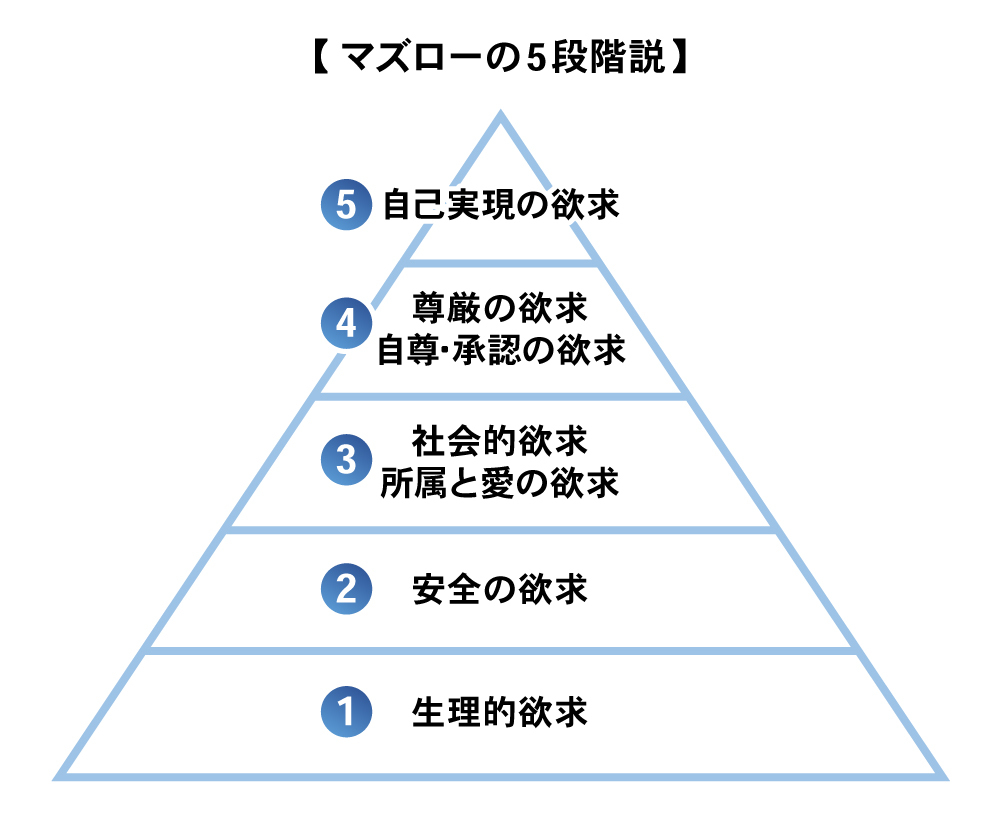
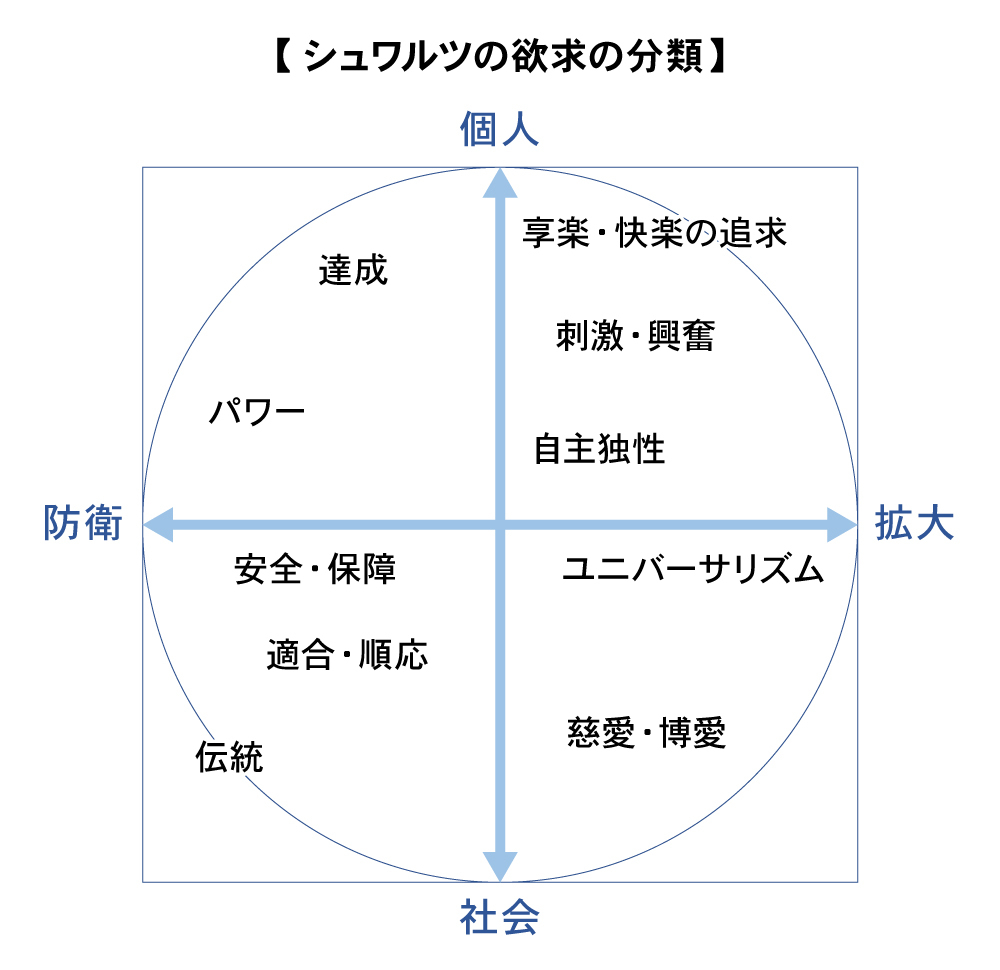
Therefore, we considered that adding an internal-external perspective to Maslow's growth axis—which progresses from "physiological and safety needs" toward "self-actualization"—could create a more comprehensive needs map.
With the supervision of Professor Hiroshi Tanaka, who specializes in consumer behavior theory at Chuo University, we successfully structured the framework. We centered Maslow's growth axis while placing the opposing axes of "Internal (Impact on Self)" and "External (Impact on Society)" on either side. We then consolidated the various needs appearing in both Maslow's and Schwartz's diagrams into eight "Fundamental Needs." The resulting diagram below is what we at DDD have redefined as the "Desire Octagram."
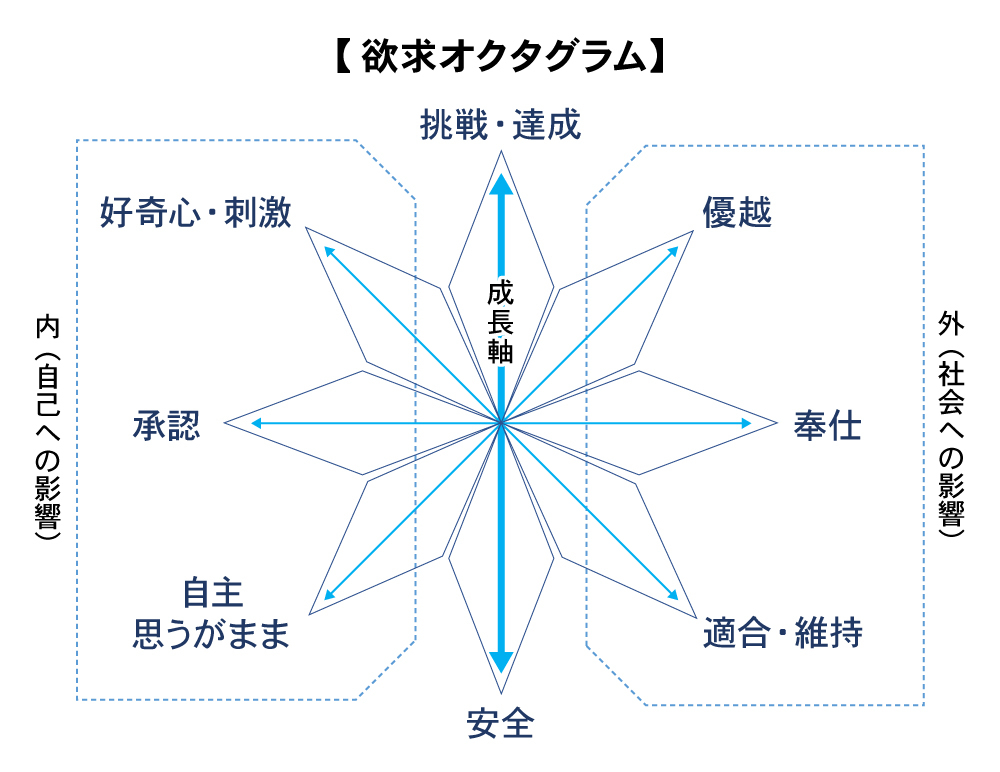
We subdivided the eight "fundamental needs" and identified 11 key "desire factors."
Next, we will explain what kinds of desires emerge when fundamental needs encounter and interact with values.
To guide modern "desires," we decided to clarify their contours using factor analysis.
First, we broke down the eight fundamental desires into concrete, tangible items that could be meaningfully answered in surveys, resulting in 43 sub-items.

Subsequently, we presented these 43 specific desire items and conducted a survey to gauge responses through Dentsu Inc.'s "Heart-Moving Consumption Survey" ( survey overview here ). By understanding responses to the desire items and performing factor analysis (*6), we combined individual desires. This resulted in the emergence of 11 particularly noteworthy groups, as shown in the table below.
The table below shows clusters of individual desires found to have strong relationships.
Further analysis of these 11 factors (groups) is expected to clarify the contours of "desire."
※6 = Factor Analysis
A statistical method used to clarify the relationships among multiple data points
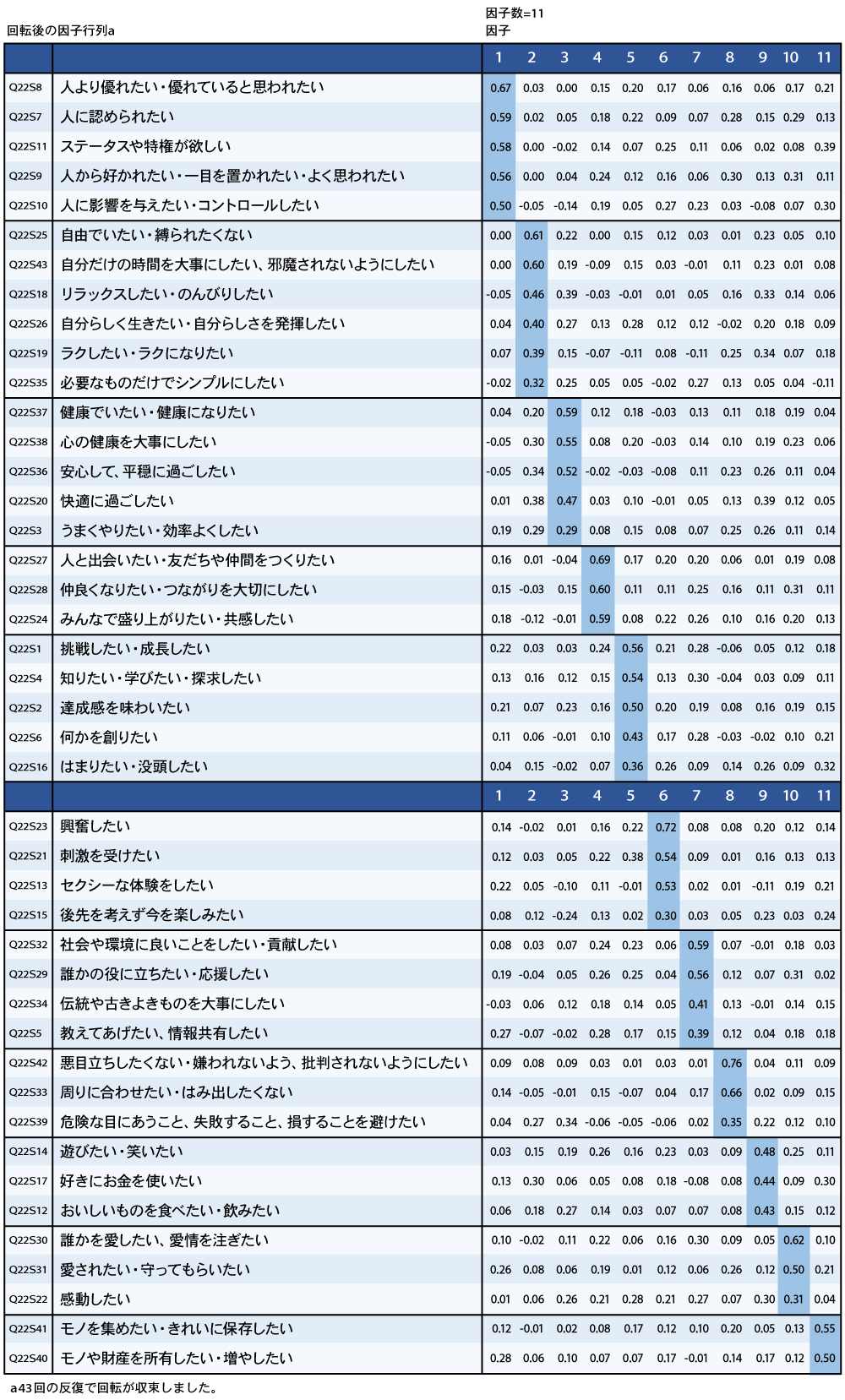
We have begun the task of clarifying the contours of "desire" by investigating responses to these 11 desire factors in relation to contemporary symbolic values, simultaneously confirming the influence of specific values.
Next time, we plan to share how we unraveled and interpreted these 11 desire factors from multiple angles.
The journey of examining desire continues.
【Contact】
DENTSU DESIRE DESIGN (Dentsu Inc.デザイアデザイン)
ddd-project@dentsu.co.jp
【Survey Overview】
Title: Dentsu Inc. "Heart-Moving Consumption Survey"
Survey Purpose: Analyze consumer consciousness, which is becoming increasingly difficult to visualize due to the ever-changing social environment, from the perspective of consumer desire, and decipher the future of Japan's consumer society.
Target Area: Nationwide, Japan
Respondent Criteria: Ages 20–74
Sample Size: 3,000 samples (allocated according to population ratios across 6 age groups [20s-70s] and 2 gender categories)
Survey Method: Internet survey
Survey Period: First Survey: September 3 (Fri) to 6 (Mon), 2021
Research Agency: Dentsu Macromill Insight, Inc.
Was this article helpful?
Newsletter registration is here
We select and publish important news every day
For inquiries about this article
Back Numbers
Author

Takami Ken
Dentsu Inc.
CX Planning Center
Engage Design Division 1 Manager / Dentsu Inc. Desire Design Member
As a planner and director, I have handled numerous campaign planning projects, new product development, and their launches/branding. Currently, I am focusing intensively on integrated planning starting from the CX domain.



